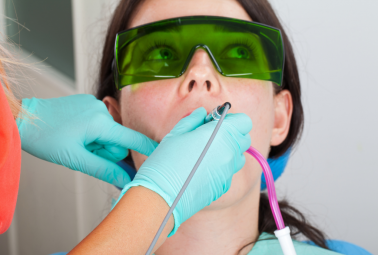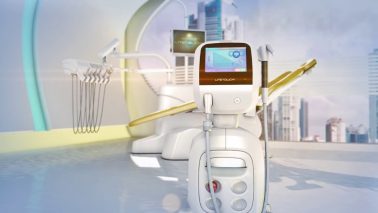I’ve spent a lot of time pondering whether or not to write about the sterilization in my clinic.
However, a conversation with a friend prompted me to share more about the subject. The topic was, „I know someone who contracted hepatitis B from the dentist.” At the time, I was outraged and defended our profession, but later realized that the myth could have real causes. After all, it’s impossible to think that there aren’t dentists who, for whatever reason, neglect the cleanliness and sterilization of their own clinic.
So, for my readers’ information, here are some essential things you should know when asking your dentist if there could be a risk of infection with certain diseases due to non-sterile dental instruments. The steps we follow in the sterilization process (even though some have told us we are being overly cautious) are as follows:
- After use, the instruments are rinsed under a stream of warm water, thus removing any traces of blood from them.
- Immediately after the first step, the instruments are placed in a 2% orocide solution (non-aldehyde antiseptic) for a minimum of 60 minutes.
- After 60 minutes, the instruments are removed from the orocide solution and rinsed again under warm water. They are then individually brushed with an abrasive paste to remove all foreign bodies from them.
- This is followed by another rinsing and drying process, then the instruments are packed in autoclavable bags that will be sealed. Additional sterilization markers, which change color when the instruments have undergone the entire sterilization process, are also placed in these bags.
- The bagged instruments are then placed in an autoclave, where they remain for 30 minutes at a temperature of 180 degrees and a pressure of 2.1 bars.
- Immediately after the autoclaving process, the bags are dated and stored in special cabinets. Subsequently, they are taken from these cabinets and used for the next dental procedure. The bags, thus sterilized, have a validity of 2 months from the moment of sterilization. All instruments that exceed this period without being used are repackaged and resterilized.
Instruments that cannot be changed for each patient are sterilized with isorapid. Very Important!
Instruments that come into contact with the patient’s mouth and cannot be changed for each patient (turbine, contra-angle, suction spray, handpiece of the scaling device, etc.), as well as other surfaces that come into contact with the patient or instruments and cannot be autoclaved, are cleaned after each patient with a concentrated isorapid solution.
This is the sterilization process we undergo daily with part of our instruments used on that day for current patients. It’s crucial to understand that every dentist should do the same.
Warm regards, Alina YourDentist.ro



